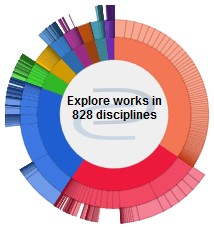Graduate Program
Biological Sciences
Degree Name
Master of Science (MS)
Semester of Degree Completion
2010
Thesis Director
Scott Meiners
Thesis Committee Member
Barbara Carlsward
Thesis Committee Member
Andrew Methven
Abstract
Allelopathy most commonly refers to chemically mediated plant interference, though the effects may range from beneficial to inhibitory. Allelopathy has been suggested as a potential mechanism for invasion success because invasive species may produce allelochemicals that are evolutionarily novel to recipient communities. To test for evolutionary mediation of allelopathy, six target species were grown in a factorial experiment with and without activated carbon or a native allelopathic species, Solidago canadensis (Canada goldenrod). I used activated carbon to remove allelochemicals to separate allelopathic effects from resource competition. The species represented pairs of evolutionary experienced (native - N) and evolutionarily na'ive (non-native - NN) species within plant life forms: C3 grasses - Danthonia spicata (N) vs. Paa pratensis (NN), herbaceous perennials - Eupatorium rugosum (N) vs. Chrysanthemum leucanthemum (NN) and herbaceous biennials - Aster pilosus (N) vs. Daucus carota (NN). If evolutionary exposure to allelochemicals is important, I would expect non-native species to respond more to S. canadensis allelochemicals than native species. Generally, there were growth differences among treatments for all target species. Activated carbon significantly increased aboveground biomass for Danthonia spicata and P. pratensis in the absence of S. canadensis. However, in combination with S. canadensis, activated carbon reduced growth in half of the species. This result was opposite of my predictions as activated carbon was anticipated to reduce allelopathic activity contributed by S. canadensis and improve growth in susceptible plants. There was no clear pattern between natives and non-natives in their responses to experimental treatments. This pattern was confirmed by the germination responses of each target species to S. canadensis extracts, where there was no systematic difference between native and nonnative species. These results suggest that using activated carbon to tease apart competitive outcomes may not be an appropriate method for allelopathy studies as it may induce unintended effects. This study finds no support for evolutionary exposure playing a role in mediating allelopathic effects in this system.
Recommended Citation
Pisula, Nikki Leigh, "Does Evolutionary Exposure Mediate Allelopathic Effects?" (2010). Masters Theses. 42.
https://thekeep.eiu.edu/theses/42




